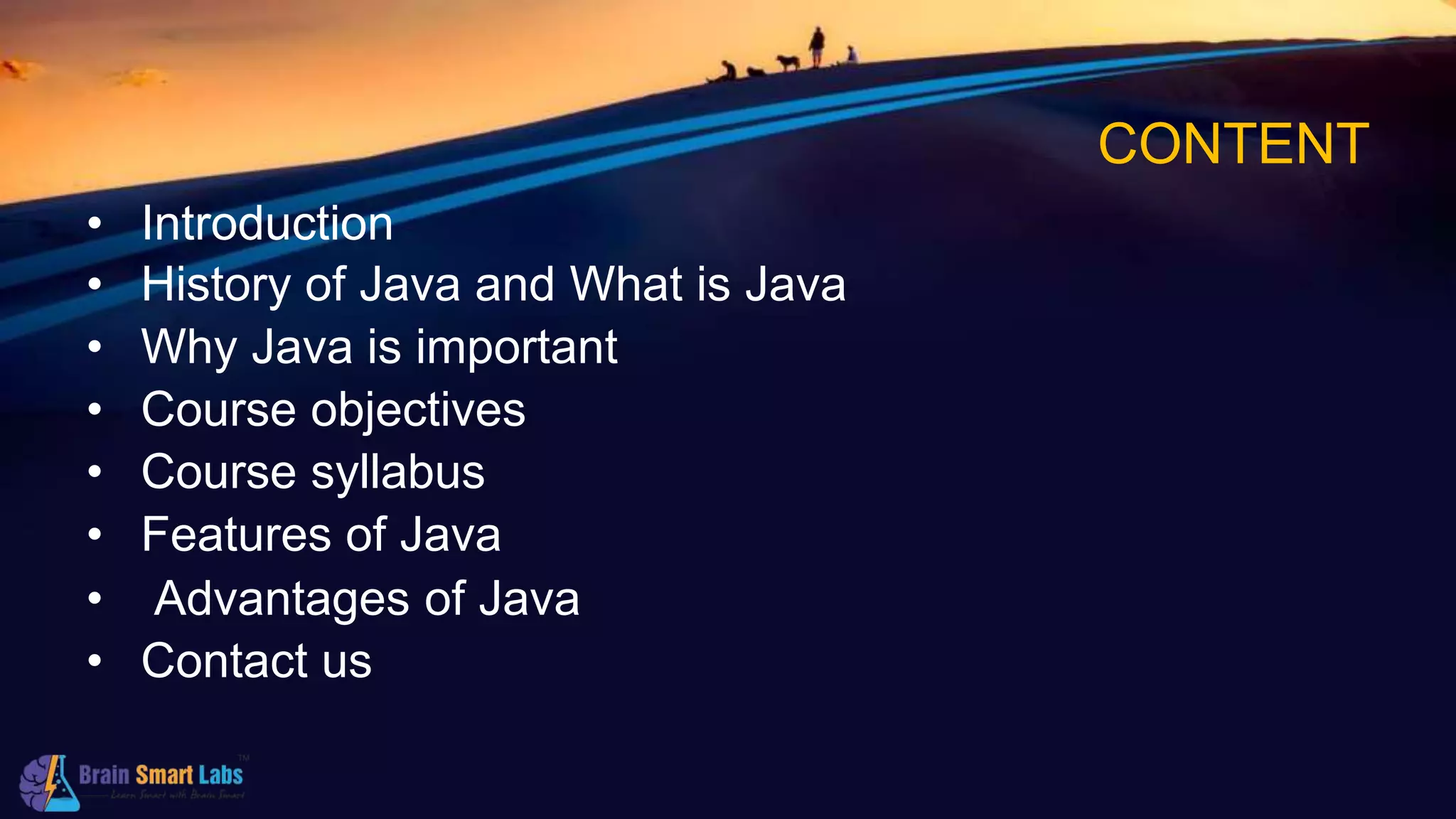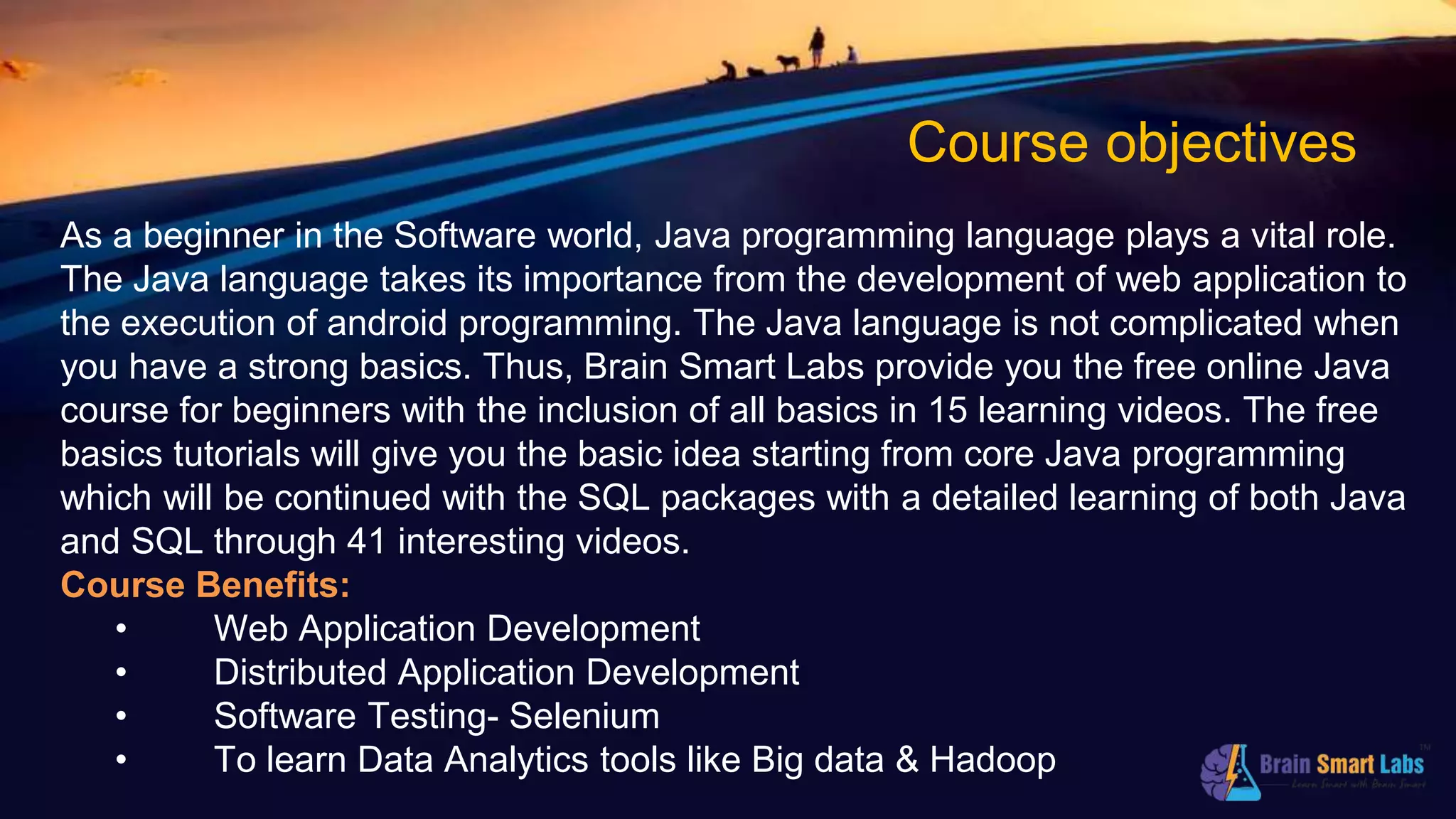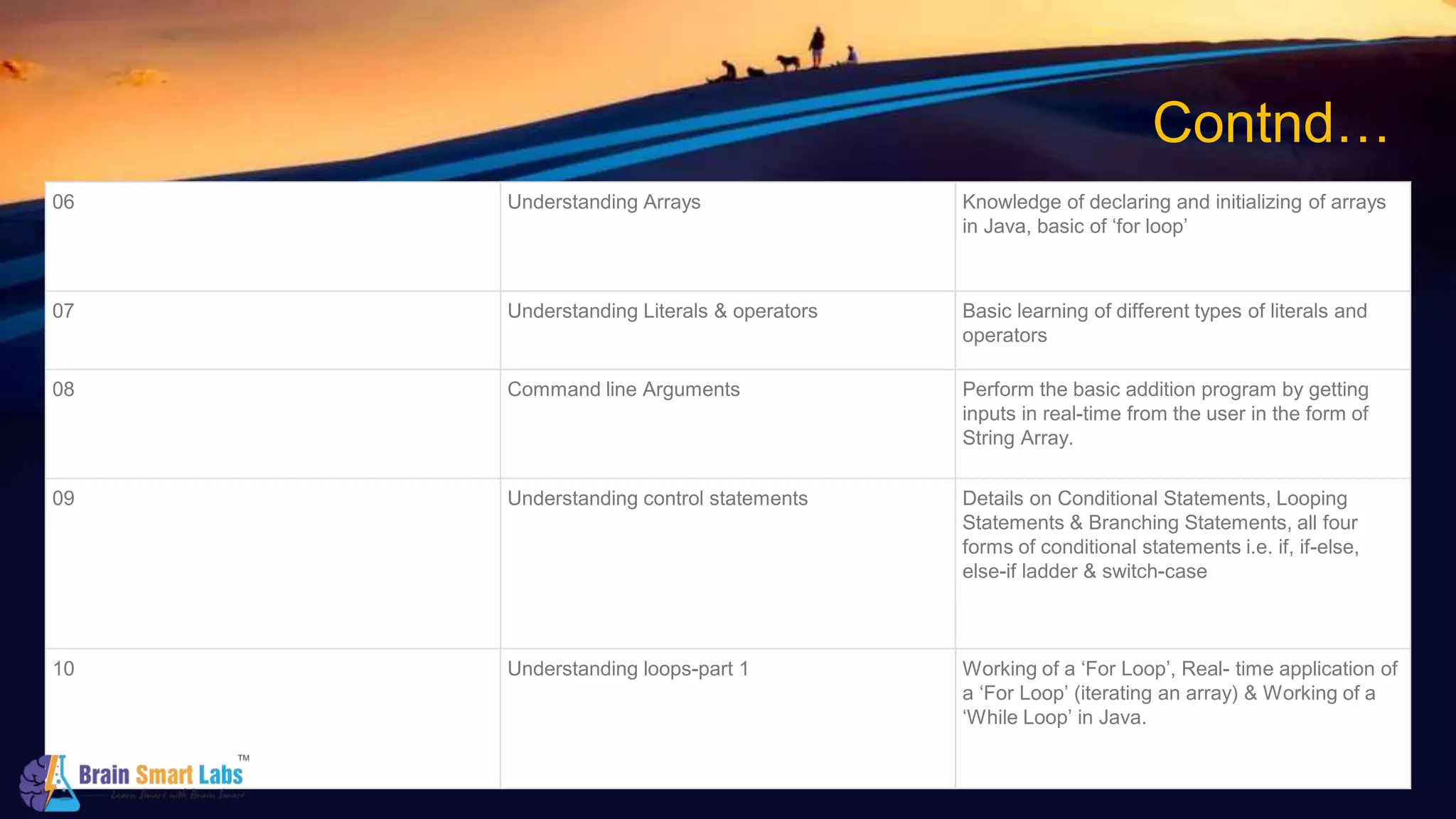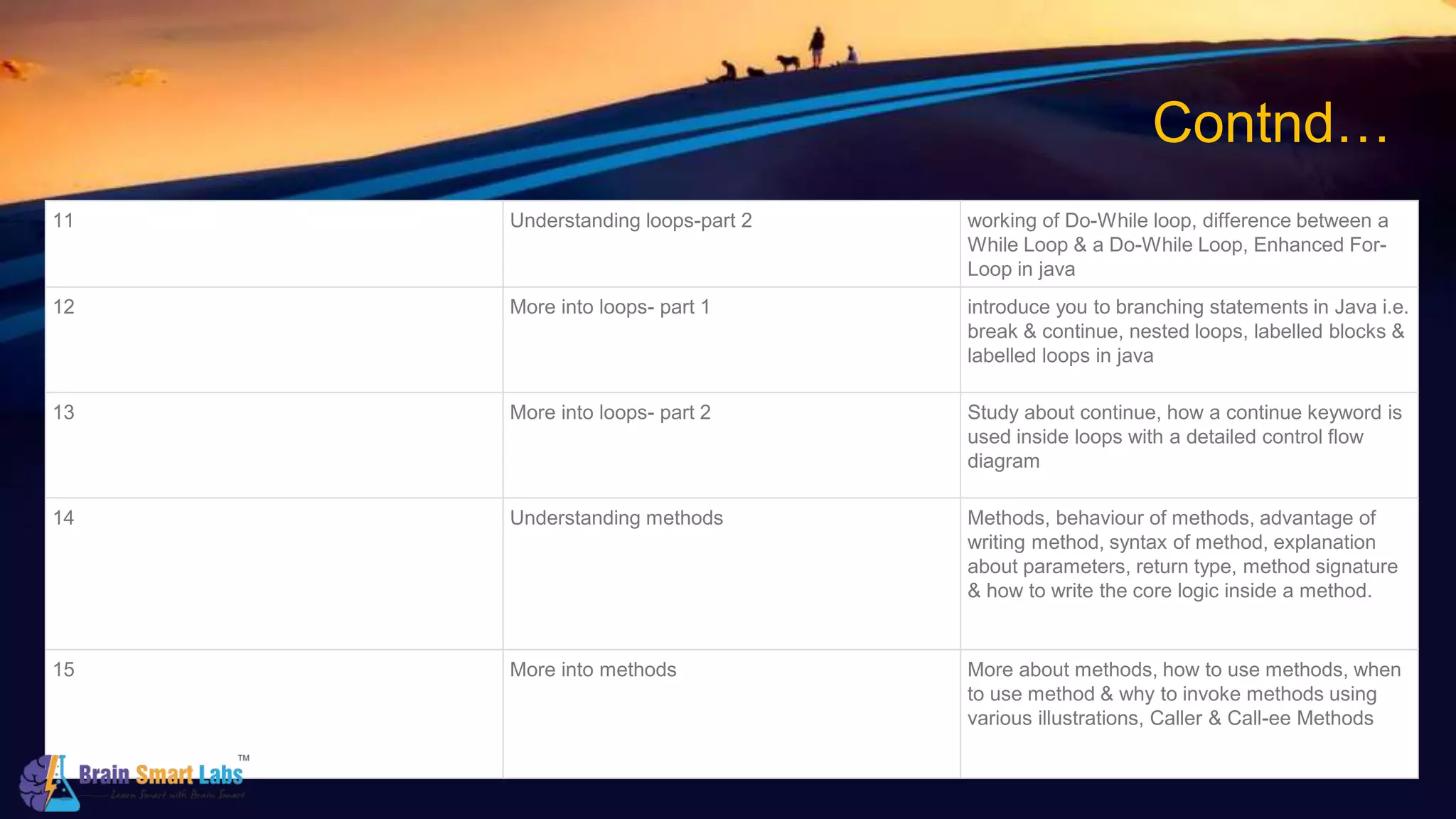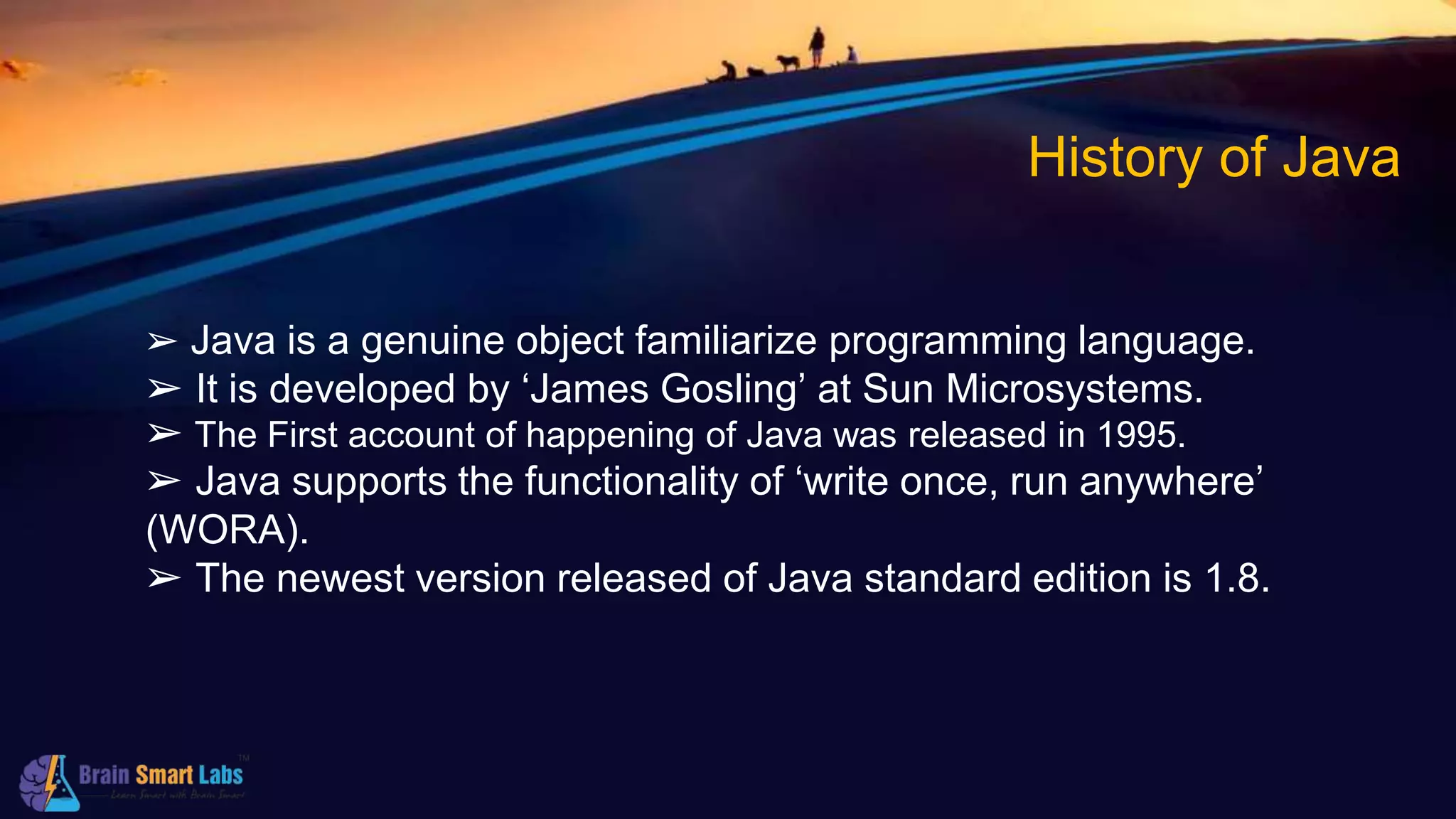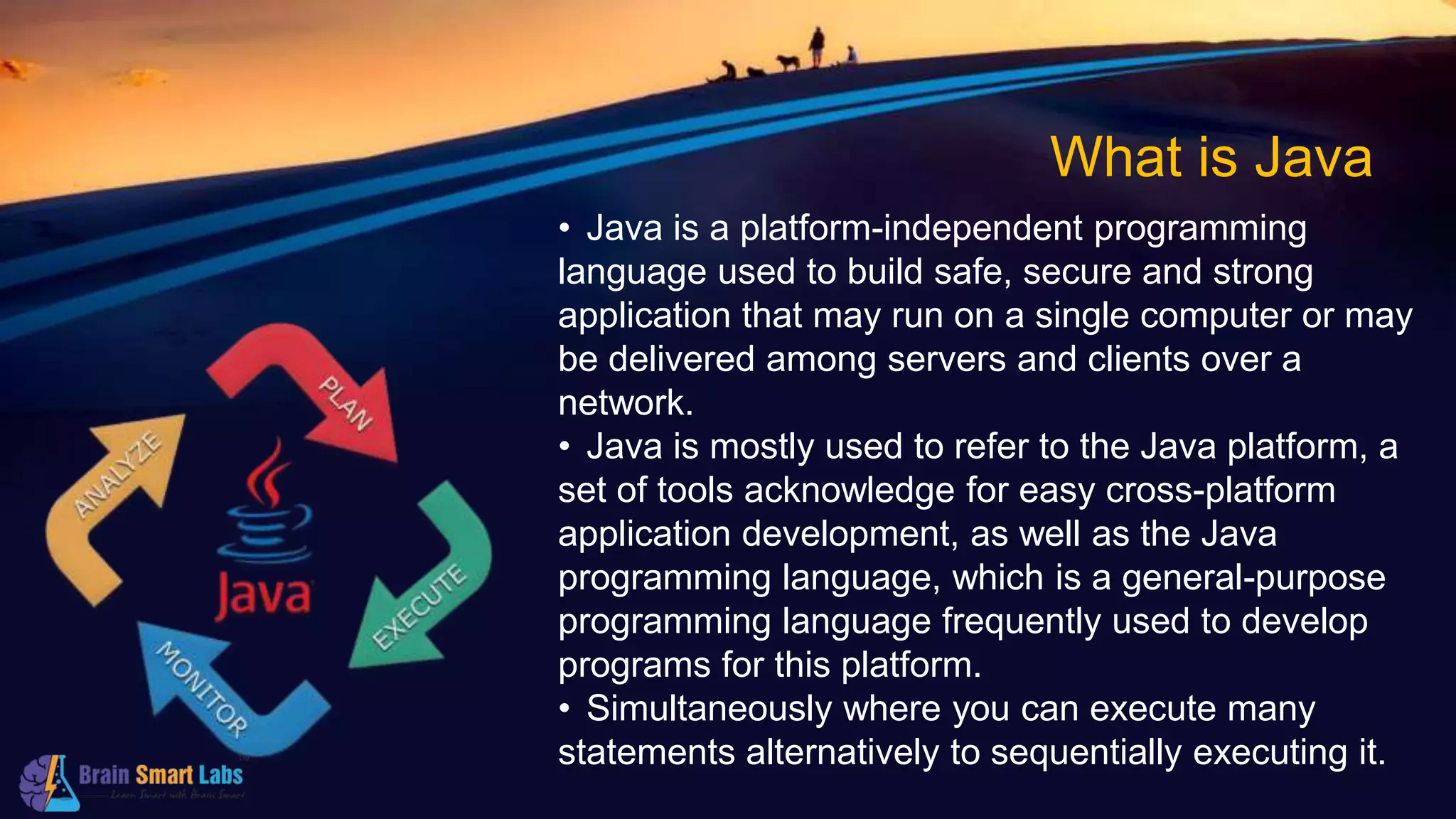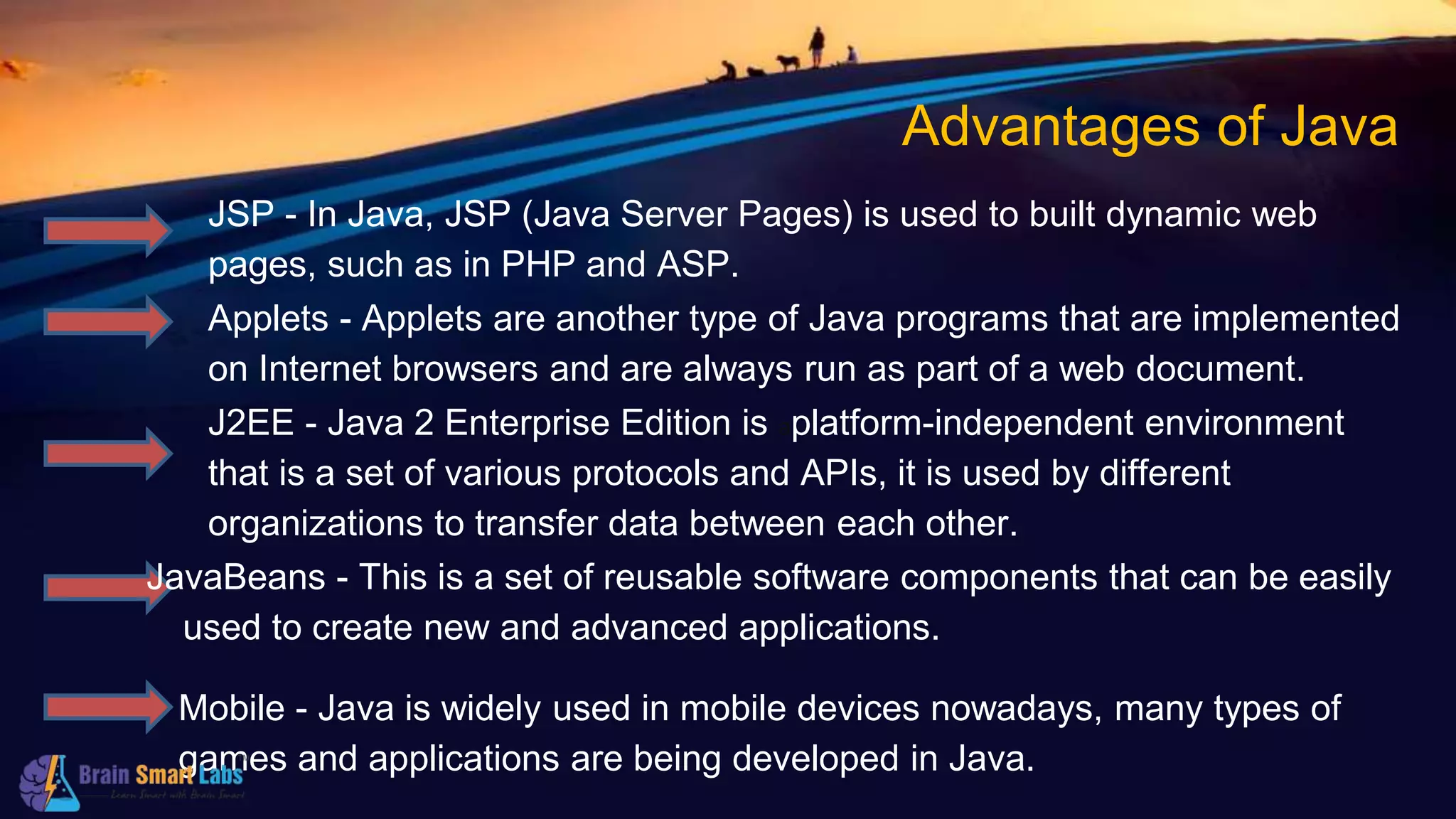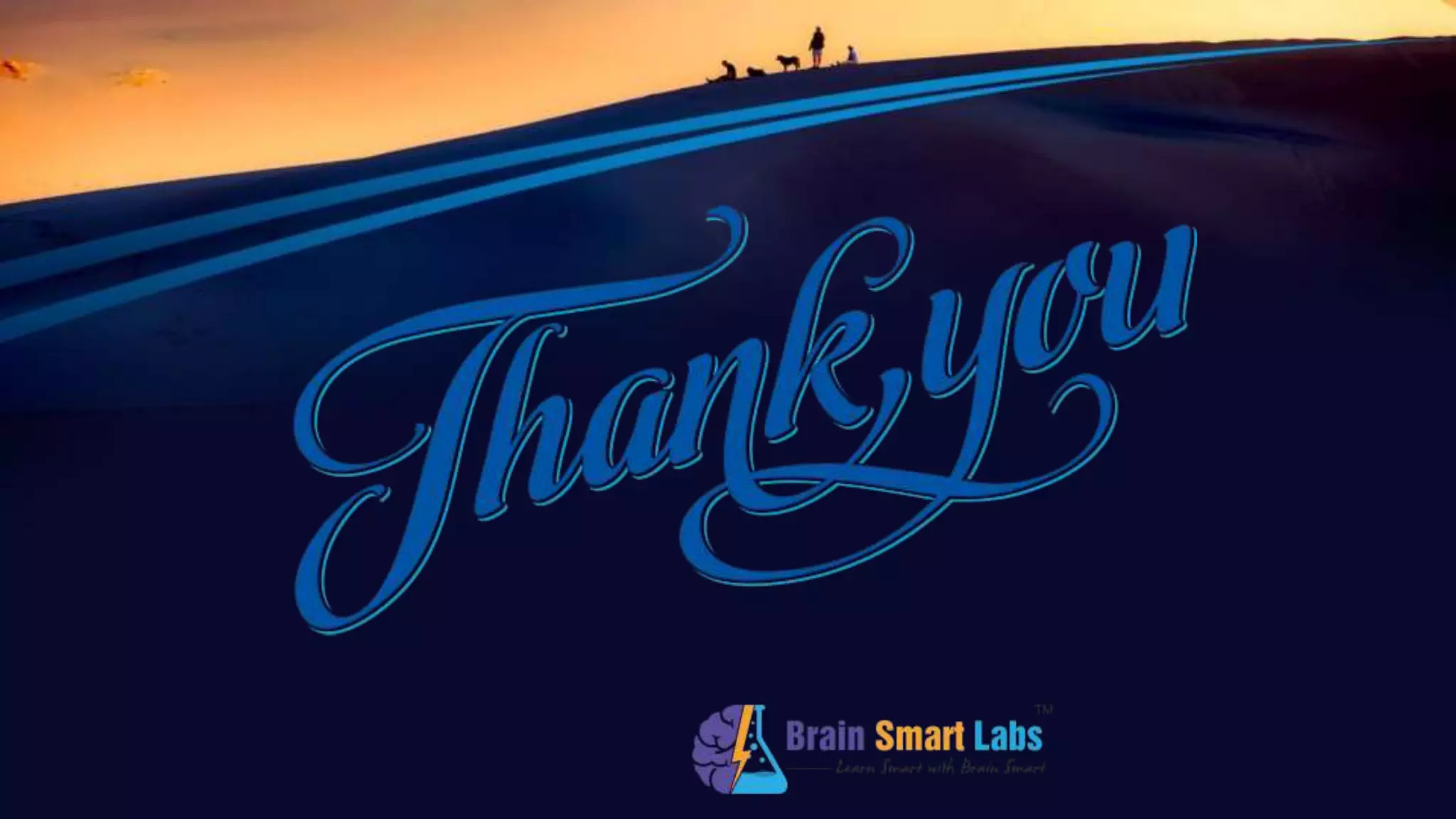This document provides an overview of a Core Java programming tutorial, including an introduction to Java's history and objectives of the course. The course syllabus is outlined which covers topics ranging from basic Java concepts like variables and data types to more advanced topics like methods and loops over 15 chapters. Finally, the document discusses key features, advantages and uses of Java for web and mobile application development.

